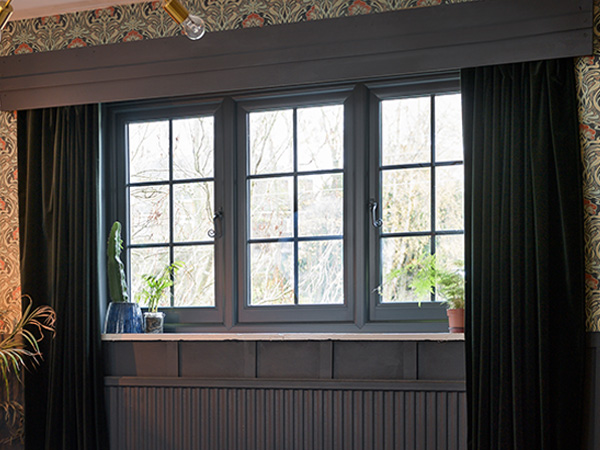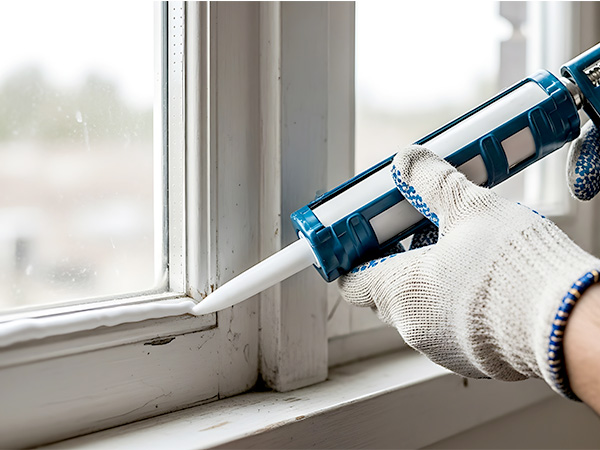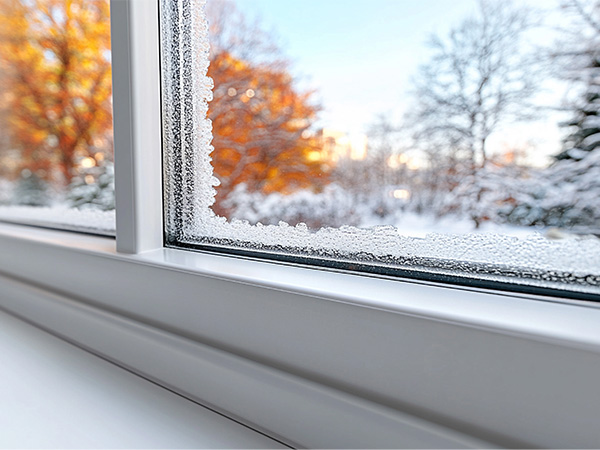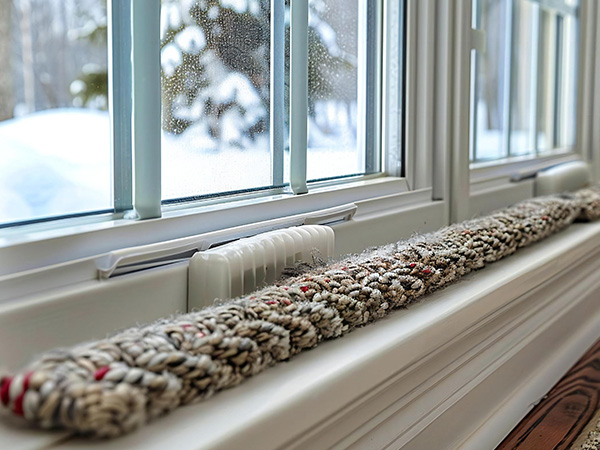The most effective method of how to insulate windows from cold air is to have your old windows taken out and replaced with the very latest energy efficient windows.
Additional steps can be taken to improve the volume of insulation provided by energy efficient windows so that they preserve an excellent level of heat and help you make sizeable savings on energy.
We’ll cover it all in greater detail to help you learn how window insulation can be maximised to create a cosier home that’s invitingly warm throughout the whole year, including during the coldest months.
How To Recognise It’s Time For Replacement Windows
Visible condensation in between window panes, recurring draughts and discernible coldness within the home indicate that your windows are failing. Any cracks, warped frames and stiffness when operating your existing designs also signal that the window styles fall short of offering a sufficient standard of insulation.
Switching to modern window solutions with good energy efficient properties will significantly bolster comfort levels and restrict heat loss.
Replacement vs. Insulation - Price and Return
To amplify home comfort, you may be unsure if extra insulation alone will be enough or if the better thing to do is to have a look into replacement windows in Scotland. It’s unlikely that insulation will make a massive difference if your windows are especially old and single glazed with worn framework.
The inexpensiveness of window insulation makes it financially enticing, but there’s no guarantee it will have the desired impact when windows are very outdated or damaged. Detecting the most appropriate option requires an assessment of cost against estimated long-term savings.
Insulation tends to be considerably cheaper, but if your windows are majorly old, replacement windows will almost certainly be a better bet as they realise impressive u values, take the edge off draughts, raise comfort and reduce heat loss. Upgrading seems logical when you assess how much energy costs continue to increase.
6 Window Insulation Tips
Don’t go thinking that added insulation can only benefit older windows. No, there’s every chance that it can have a positive effect on contemporary energy-efficient windows too. Here are six ways of how to insulate windows for winter, which are very timely, and they satisfy a series of budgets and scenarios.
1. Window Film
Application of insulation window film creates an added layer to the glass, reducing heat loss through conduction. This is a popular technique used by those living in rented accommodation and avoids a new installation.
Implemented with the aid of a hairdryer, you can easily remove it in the future and should notice an improvement to comfort. A great option for single-glazed windows, it allows a generous level of natural light to enter whilst preserving warmth.
It offers an element of UV protection, making fading on furniture or flooring more improbable. Fitted correctly, it can reduce heat loss by up to 30%.

2. Thermal Curtains and Blinds
The introduction of thick fabrics along with specialised thermal blinds to establish a barrier and keep more heat trapped inside, will see less of it escape through glazing. A myriad of styles and colours are available, enabling you to keep a consistent home aesthetic.
If your house is south-facing or really overrun with draughts, heavier fabrics or lined curtains are advocated. Turn to thermal blinds for small windows or where curtains aren’t viable.
Apart from their insulating qualities, they will also uplift privacy and can reduce noise from outside. They’re at their most effective when drawn at night and opened during a sunny spell.

3. Caulking and Weatherstripping
If gaps have formed around your window frames, seal them with caulk and weatherstripping to diminish draughts and heat loss. They work particularly well when employed in old timber or metal-framed windows if cracks have caused air to start slipping through.
It’s easy to apply and remove weatherstripping, making it a versatile solution. Caulk is a more permanent solution and therefore best reserved for long-term insulation jobs.
Systematic monitoring of sealing and reapplication, when necessary, will see that your windows offer optimum performance through winter and beyond.

Request Your Free Window Quote
Simply fill in your details for your free, no obligation quotation
4. Bubble Wrap Insulation
Believe it or not, bubble wrap can be harnessed as a temporary method of insulating windows and is cheap to buy. Once it is cut to size, you can apply it on the internal side of the glass with either water or double-sided tape, which holds warmth and slows heat loss.
Again, it is a good window insulation idea for rented homes or where you want to avoid a permanent alteration of windows. While not the prettiest to look at, you can always disguise it from view behind curtains or blinds.
Look to replace or reapply whenever the bubbles deflate so that insulation is sustained.

5. Secondary Glazing
You’re probably familiar with double and triple glazing, but perhaps not with secondary glazing, which differs somewhat.
Secondary glazing is basically an extra glass pane or acrylic that you can add to an existing window frame to form a thermal buffer.
Often suggested for how to insulate windows of the heritage kind, it will magnify insulation without the need for replacement. Additionally, it can also lessen the amount of external noise that reaches an interior.
It’s not beyond the realms of possibility to earn your money back on it thanks to how successfully it can reduce heat loss through energy bills.

6. Draught Excluders and Insulation Tape
Air leaks that manifest can be dealt with by applying strips of draught excluders or insulation tape in the relevant spots. They don’t cost much, are simple to fit and a quick way of addressing such problems.
Perfect for older residences and windows with worn out sealing, it only takes a few moments to apply and is typically used for sliding sashes, doors and the bottom of windows.
When paired with things like thermal curtains, they can really raise warmth. Just ensure that you regularly check them in case any improvements need to be made.

Why Window Insulation Is Significant
The cost of window insulation justifies itself even when incorporated into energy-efficient windows or newly updated glazing. Warmth will be firmly trapped inside and draughts reduced, leading to a much-improved living temperature.
Separate to fortifying comfort, it has the potential to slash fuel costs, which is very welcome when the winter weather arrives. Much pressure will be taken off your heating to keep you warm, and it may well prolong the life of your windows. Coupled with reliable energy-efficient windows, thermal blinds, draughtproofing and insulating film, a snugger and more economical home is a certainty.
On the topic of windows, have you found time to read our article about what is a good u value for windows? Please do – it will hopefully be equally informative as this one.